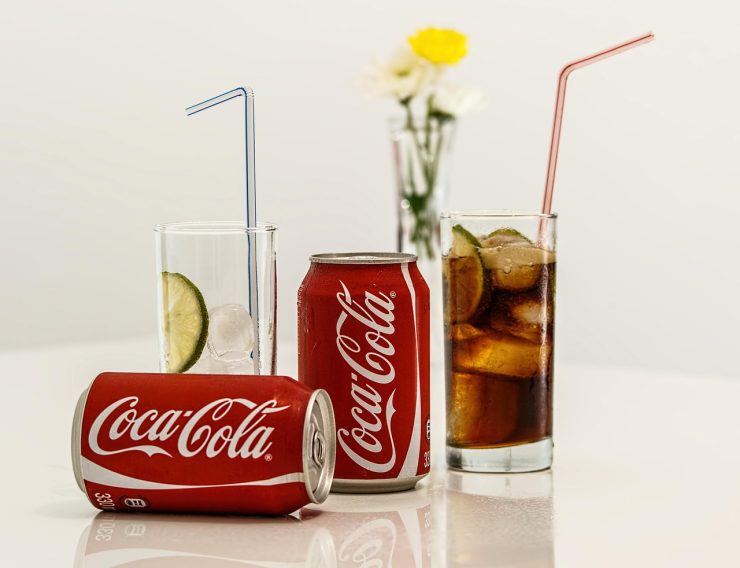It’s hard to overstate how popular soda is. Coca-Cola alone is consumed at a rate of more than 1.9 billion drinks per day—yes, billion. That’s not even counting Pepsi and the many other sugary sodas on the market. Recognized in more than 200 countries, soda is truly a global phenomenon.
But while awareness around health concerns is growing, many people still haven’t kicked the soda habit. In fact, according to a Gallup poll, about half of Americans still drink soda daily. On average, that’s 2.6 glasses per person, per day. Meanwhile, in Mexico—where soda consumption is the highest in the world—each person drinks about 36 gallons a year. Not surprisingly, rates of type 2 diabetes are through the roof.
In the U.S., the story isn’t much different. Soda consumption continues to play a major role in rising rates of obesity and diabetes. One thing that sets American soda apart: the sweetener. Most U.S. soft drinks are made with high fructose corn syrup—a particularly problematic form of sugar. While all forms of added sugar are tough on the body, high fructose corn syrup puts an especially heavy load on the liver and can wreak havoc on blood sugar levels.
Here’s a quick breakdown of what happens in the body after drinking a soda:
-
Within minutes, around 10 teaspoons of sugar hit the system. Normally, that much sugar might trigger nausea, but soda masks it with carbonation, acids, and flavorings.
-
15–20 minutes in, blood sugar spikes, insulin floods the system, and the liver scrambles to turn that sugar into fat. Triglyceride levels rise, and over time this can lead to fat buildup in the liver—aka Non-Alcoholic Fatty Liver Disease.
-
Around 30 minutes, caffeine absorption kicks in. Heart rate and blood pressure rise, pupils dilate, and the liver releases even more sugar.
-
At 45 minutes, dopamine floods the brain’s reward center—triggering the same kind of pleasure response as addictive substances.
-
After an hour, minerals like calcium, magnesium, and zinc are flushed out of the body thanks to the diuretic effect of caffeine and phosphoric acid. These minerals are crucial for bone and dental health.
-
Not long after, a crash sets in—leaving behind fatigue, irritability, hunger, and often, another craving.
Even just one soda a day can take a toll.
Weight Gain and Diabetes
Long-term studies like the Nurse’s Health Study found that daily soda drinkers gained around 10 pounds over four years. And the risk of developing type 2 diabetes? It doubles. With one in three people at risk, soda pushes that likelihood even higher.
Brain Function
Too much sugar doesn’t just affect the waistline—it also affects the brain. Research from UCLA showed that sugar consumption reduces a key brain chemical called BDNF (brain-derived neurotrophic factor), which plays a big role in memory and learning. Low levels of BDNF are also linked to depression, dementia, and insulin resistance—a triple threat for mental and metabolic health.
Another downside: regular sugar intake makes it harder for the brain to regulate hunger. That means it’s easier to overeat—especially when the body can’t tell when it’s full.
Heart Health
Sugar, not saturated fat, is the real culprit behind many heart issues. A Harvard study showed that just one soda per day increases the risk of heart disease by 20%. Another study from the University of Miami found that daily diet soda drinkers had a 61% higher risk of heart attacks and strokes—even when accounting for other lifestyle factors.
Cancer Risk
Several studies have linked soda consumption to higher cancer risk. Pancreatic cancer, one of the deadliest forms, is 87% more likely in those who drink one or more sodas a day, according to research published in Cancer Epidemiology, Biomarkers & Prevention. Sugary beverages are also associated with cancers of the gallbladder, liver, and bile ducts.
Liver Damage
Non-alcoholic fatty liver disease (NAFLD) is one of the fastest-growing liver issues—and soda is a key contributor. Excess sugar gets converted into fat in the liver, and over time, this can lead to inflammation, scarring, and even liver cancer.
Respiratory Issues
Studies have also connected high soda intake with respiratory problems like asthma and COPD. One study from the University of Adelaide found a clear link between soda consumption and increased risk of lung disease.
Teeth and Bones
It’s well known that sugar causes cavities, but soda goes further. The acids in soda (especially phosphoric and citric acid) erode tooth enamel, and some studies even compare its effects to battery acid. These same acids also bind to essential minerals like calcium and magnesium, leaching them from the body and weakening both teeth and bones over time.
So what’s the alternative?
The most effective approach is to quit soda altogether. “Moderation” tends not to work, especially with something this addictive. Diet sodas aren’t the answer either—artificial sweeteners have their own set of health risks, including weight gain and disrupted gut health.
Looking for something fizzy and refreshing without the sugar overload? Kombucha is a great swap. It has a tangy taste, a gentle fizz, and comes packed with probiotics and antioxidants. Some brands, like Live Soda, taste remarkably similar to cola but only have about 5 grams of sugar per serving—compared to 40 grams in a typical can of soda.
Other ideas:
-
Herbal iced teas with a touch of stevia or maple syrup
-
Infused water with fruit slices, cucumber, or mint
-
Sparkling mineral water for those who like the bubbles (plus, it adds beneficial minerals)











